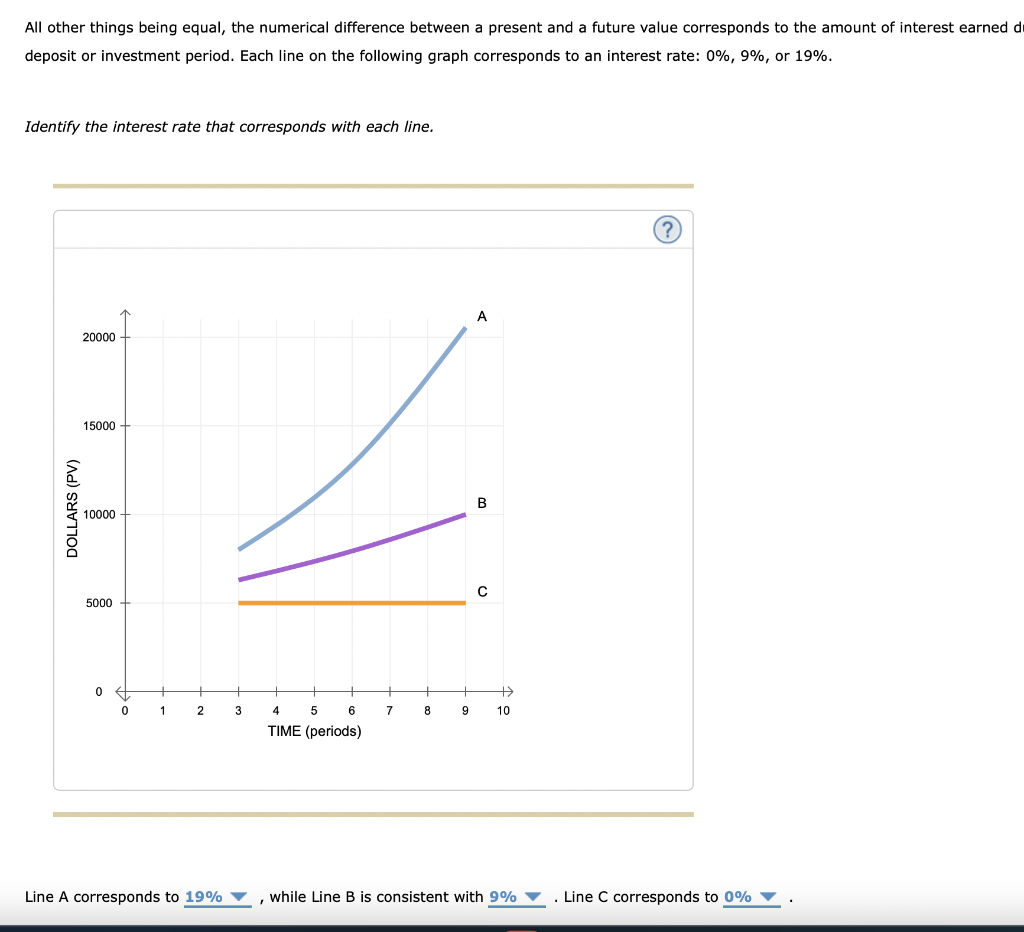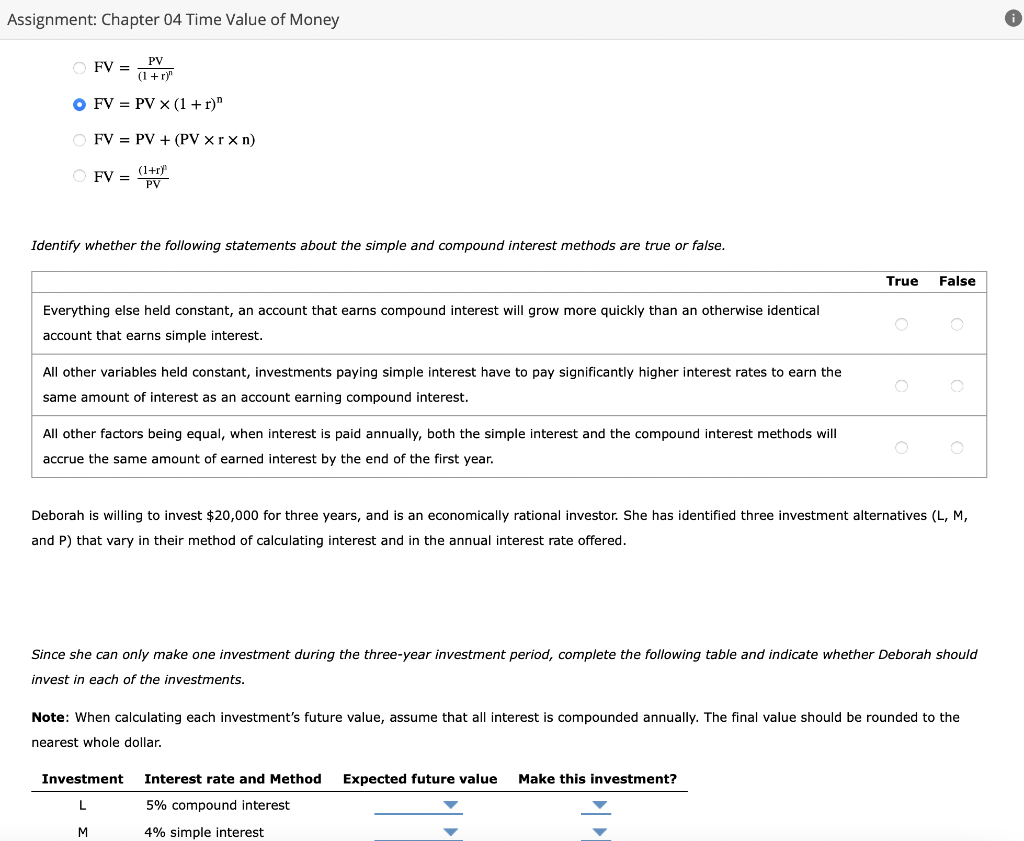




The principle of the time value of money is probably the single most important concept in financial management. One of the most frequenty encountered applications involves the calculation of a future value. occurs when interest is not earned on prior periods' interest. Which of the following is not one of these variables? The trend between the present and future values of an investment The duration of the deposit ( n ) The present value (PV) of the amount deposited The interest rate ( r ) that could be earned by deposited funds All other things being equal, the numerical difference between a present and a future value corresponds to the amount of interest earned during deposit or investment period. Each line on the following graph corresponds to an interest rate: 0%,9%, or 19%. Identify the interest rate that corresponds with each line. All other things being equal, the numerical difference between a present and a future value corresponds to the amount of interest earned deposit or investment period. Each line on the following graph corresponds to an interest rate: 0%,9%, or 19%. Identify the interest rate that corresponds with each line. ? Line A corresponds to , while Line B is consistent with . Line C corresponds to Line A corresponds to , while Line B is consistent with . Line C corresponds to Investments and loans base their interest calculations on one of two possible methods: the interest and the interest methods. Both methods apply three variables-the amount of principal, the interest rate, and the investment or deposit period-to the amount deposited or invested in order to compute the amount of interest. However, the two methods differ in their relationship between the variables. Assume that the variables r,n, and PV represent the interest rate, investment or deposit period, and present value of the amount deposited or invested, respectively. Which equation best represents the calculation of a future value (FV) using simple interest? FV=PVInFV=PV(PVrn)FV=PV(PVrn)FV=PV+(PVrn) Which equation best represents the calculation of a future value (FV) using compound interest? FV=(1+r)nPVFV=PV(1+r)nFV=PV+(PVrn)FV=PV(1+r)n Assignment: Chapter 04 Time Value of Money FV=(1+r)nPVFV=PV(1+r)nFV=PV+(PVrn)FV=PV(1+r)n Identify whether the following statements about the simple and compound interest methods are true or false. Deborah is willing to invest $20,000 for three years, and is an economically rational investor. She has identified three investment alternatives (L, M, and P ) that vary in their method of calculating interest and in the annual interest rate offered. Since she can only make one investment during the three-year investment period, complete the following table and indicate whether Deborah should invest in each of the investments. Note: When calculating each investment's future value, assume that all interest is compounded annually. The final value should be rounded to the nearest whole dollar. FV=PV(1+r)n Identify whether the following statements about the simple and compound interest methods are true or false. \begin{tabular}{|l|} \hline True \\ Everything else held constant, an account that earns compound interest will grow more quickly than an otherwise identical \\ account that earns simple interest. \\ All other variables held constant, investments paying simple interest have to pay significantly higher interest rates to earn the \\ same amount of interest as an account earning compound interest. \\ All other factors being equal, when interest is paid annually, both the simple interest and the compound interest methods will \\ \hline \end{tabular} Deborah is willing to invest $20,000 for three years, and is an economically rational investor. She has identified three investment alternatives ( L, M, and P) that vary in their method of calculating interest and in the annual interest rate offered. Since she can only make one investment during the three-year investment period, complete the following table and indicate whether Deborah should invest in each of the investments. Note: When calculating each investment's future value, assume that all interest is compounded annually. The final value should be rounded to the nearest whole dollar











